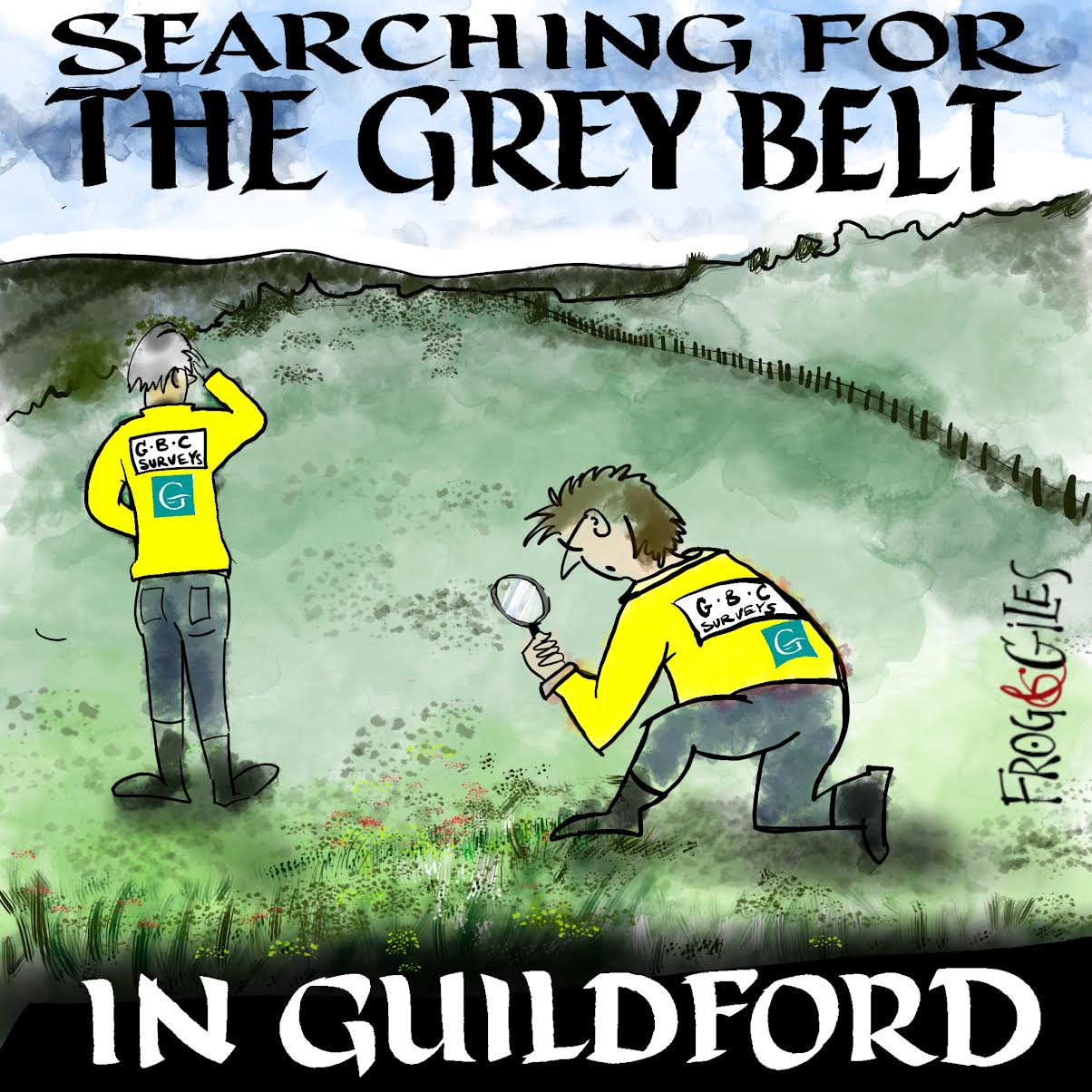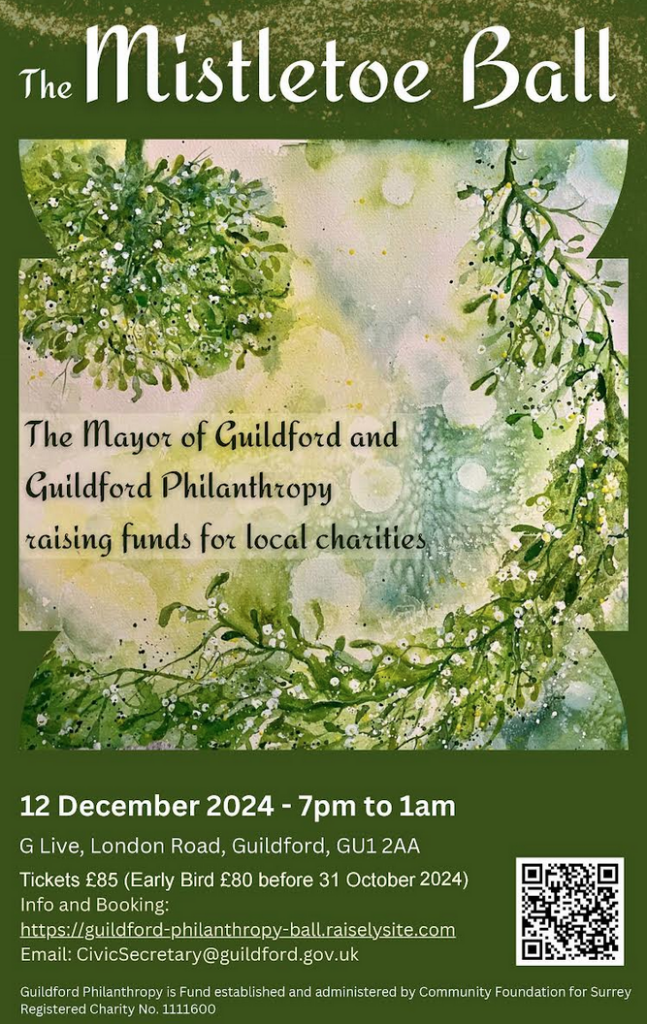 Abraham Lincoln
If given the truth, the people can be depended upon to meet any national crisis...
Abraham Lincoln
If given the truth, the people can be depended upon to meet any national crisis...
 Guildford news...
for Guildford people, brought to you by Guildford reporters - Guildford's own news service
Guildford news...
for Guildford people, brought to you by Guildford reporters - Guildford's own news service
Letter: It Is Right to Protect Natural Habitats
Published on: 31 Jul, 2017
Updated on: 31 Jul, 2017
From Nick Norton
One of the reasons we have a restricted area of protected habitat is that voices like Mr Bridger’s [see: Surely Executive’s Decision To Extend Protection Programme Is A Joke?] have held sway in the past and destroyed the rest where it was economically possible and convenient.
The fact this one exists at all is little to do with current habitat regulations administered by the UK government or the EU but with its historic use by the armed forces as a firing and military training area, thereby excluding frequent human presence and accompanying disturbance; flying ordnance is no respecter of wildlife or human life.
Equally, wild creatures are no respecters of man-made boundaries; they might be resident one year and not the next. Just because no human has sighted a Dartford warbler on this SSSI this season or the previous is of little significance to the species. What do they know or care of human greed?
Mr Bridger’s view that a human-centric world must dominate nature belongs in the 19th century. With a more balanced regional economic policy over Mr Bridger’s lifetime by political parties of all colours, this region would be under less pressure to generate housing in areas at the margins of a protected habitat and this discussion would prove unnecessary.
Responses to Letter: It Is Right to Protect Natural Habitats
Leave a Comment Cancel replyPlease see our comments policy. All comments are moderated and may take time to appear. Full names, or at least initial and surname, must be given.

"Found any?" - "Nope, it all looks green to me!" (See Opinion: The Future is Congested, the Future is Grey)




Recent Articles
- Ash Level Crossing Will Not Close in December, SCC Assures Residents
- Sara Sharif Trial Latest – The Judge Reviews the List of 71 Injuries Found on Sara
- Column: Guildford’s MP Writes – Championing the Needs of Guildford and Our Villages
- City Win at Last With Three Penalties in Cup Tie
- Letter: Development of Gosden Hill Could Be an Opportunity for Improvement
- Ash Level Crossing Row: GBC Rejects Cabinet Member’s Statement As ‘Factually Incorrect’
- Letter: What Will Be Done for Burpham Residents Now?
- County Council Cabinet Confirms Its Decision on London Road Scheme
- Postcode Lottery Police Funding – It ‘Cannot Be Fair’ Says Police Commissioner
- Heartbreak for City Again as Two Extra-time Goals Snatch Victory


Recent Comments
- Warren Gill on Ash Level Crossing Row: GBC Rejects Cabinet Member’s Statement As ‘Factually Incorrect’
- Olly Azad on Heartbreak for City Again as Two Extra-time Goals Snatch Victory
- Brian Holt on Heartbreak for City Again as Two Extra-time Goals Snatch Victory
- Helen Skinner on County Council Cabinet Confirms Its Decision on London Road Scheme
- John Oliver on County Council Cabinet Confirms Its Decision on London Road Scheme
- John Ferns on Ash Level Crossing Row: GBC Rejects Cabinet Member’s Statement As ‘Factually Incorrect’
Search in Site
Media Gallery
Dragon Interview: Local Artist Leaves Her Mark At One of England’s Most Historic Buildings
January 21, 2023 / No Comment / Read MoreDragon Interview: Lib Dem Planning Chair: ‘Current Policy Doesn’t Work for Local People’
January 19, 2023 / No Comment / Read MoreA3 Tunnel in Guildford ‘Necessary’ for New Homes, Says Guildford’s MP
January 10, 2023 / No Comment / Read More‘Madness’ for London Road Scheme to Go Ahead Against ‘Huge Opposition’, Says SCC Leader
January 6, 2023 / No Comment / Read MoreCouncillor’s Son Starts Campaign for More Consultation on North Street Plan
December 30, 2022 / No Comment / Read MoreCounty Council Climbs Down Over London Road Works – Further ‘Engagement’ Period Announced
December 14, 2022 / No Comment / Read MoreDragon Interview: GBC Reaction to the Government’s Expected Decision to Relax Housing Targets
December 7, 2022 / No Comment / Read MoreHow Can Our Town Centre Businesses Recover? Watch the Shop Front Debate
May 18, 2020 / No Comment / Read More







David Croft
July 31, 2017 at 10:41 pm
I struggle to understand the logic of Mr Norton’s comments with regards to the birds surviving due to one of the Special Protection Areas being a military firing range. What about all the other areas like Wisley Common?
I have walked on Wisley Common for fifty years and as far as I’m concerned the biggest threat to the natural heathland habitat occurred approximately 20 years ago when many of the scots pine trees were felled for timber and silver birch took hold on the common.
The Surrey Wildlife Trust have every year since struggled to remove the birch saplings that, if left to grow, would no doubt reign supreme over the heather. I’ve always thought that the regular working parties traipsing all over the heather to remove the saplings probably cause more disturbance the ground nesting birds than any dog walkers.
In my opinion, I feel that we should let nature take its course and let the species adapt. Isn’t that what species have been doing for years? I am all for building natural habitats for many species to flourish but am totally against trying to control nature.
This SANG [Special Area of Natural Greenspace] policy has evolved over the last ten years into a money spinner for the council who now seem to want to protect their monopoly on SANGs by refusing private SANGs under the assumption that only the council can be truly trusted to manage the SANGs in perpetuity.
This policy in its entirety needs an independent review before £64 million is misspent.
Once again I commend Alderman Bridger for bringing this issue up again and only hope that commentators put aside their preconceived notions of Mr Bridger’s views on housing and study this particular aspect of habitat protection.
Harry Clarke
August 2, 2017 at 4:02 pm
It would be great if we could let nature take its natural course. Unfortunately, humans have been interfering in the environment for so long that nature has got out of balance. Lost for ever are the large herbivores that created many habitats such as heathlands and chalk grasslands. Lost are the large carnivores that used to control herbivore numbers. Now the understory of woods is in a terrible state because of by overgrazing by deer.
Heathlands do not consist of silver birch and scots pine, but woodlands do. The lovely silver-studded blue butterfly requires early-successional habitat, which is bare patches between the heather. Lose that habitat and we loose the Silver-studded Blue. Thank goodness for the MoD heathland sites.
The only way heathlands can be maintained in the current environment is by humans managing the habitat. Otherwise they will be lost for ever. Habitat management can be by grazing with livestock, or by work parties.
Habitat management by working parties takes place during the winter months, and not during the summer months when birds are nesting. It would great if there were more volunteers to help out on working parties.
The greatest disturbance to ground nesting birds comes from dogs. Please keep them on a lead, especially during the spring and summer months.
Please protect natural habitats.
David Croft
August 3, 2017 at 2:01 pm
I would like to thank Mr Clarke for educating me on heathland management and I am pleased to hear that the working parties take place outside of the ground nesting season. It would be very interesting to hear Mr Clarke’s views on the long term management of Wisley Common.
For instance, is it going to be necessary to have working parties removing the birch and scots pine saplings in perpetuity (125 years)? And is this a sustainable undertaking, or would it be more sustainable to graze large herbivores on fenced of areas of the Heath? (Obviously, they would have to be moved off during the ground nesting season.)
Does Mr Clarke have any facts on the three protected bird species whether their numbers are on the increase? Does the Surrey Wildlife Trust who manage Wisley Common benefit from the SANG money collected to help with this work or is it purely dependent on volunteers?
Gordon Bridger
August 3, 2017 at 2:06 pm
I am puzzled as to how Mr Norton knows what my environmental views are. Clearly he has not been around very long for over the last 40 years for I have been involved in many campaigns to improve our environment.
Let me enlighten him about Whitmoor Common birds. Does he know how many endangered species there are? According to Natural England, in 2016 there were two Dartford warbler nests, no woodlarks and possibly four nightjars. And does he know how much tax has been raised so far to protect them? It is £6million.
Does he know why the bird numbers are so low? According to the report, which was approved by the Executive, it “the effects of urbanisation which has a detrimental effect on the SPA and notably from the recreational effect of local people ”
Oops! Does it really say that? So it is the Whitmoor Common users who go about upsetting birds! They should be very insulted and I hope will organise a protest against this calumny. Especially since in an earlier email I got from GBC it stated: “effectively the bird population was wiped out by a cold spell in 2008/9”. Unfortunately, this information was not in the report to the Executive. I wonder why?
I naturally welcome Mr Croft’s support and would like his views on the claim that he and others users are responsible. I would like to know how many users there are per year and how many have been tempted to visit others SANGS such as Tyting Farm which has allocated £12.2million for this purpose and which has no parking. It’s a long walk.
Jules Cranwell
August 3, 2017 at 8:31 pm
Mr Bridger appears to hold the view that biodiversity is a luxury we cannot afford. It is a necessity, if we are to continue to exist on this planet. We mess with nature’s balance at our eternal peril.
Malcolm Fincham
August 3, 2017 at 11:35 pm
And so is this the road we must continue to travel? The corrupting influence of money seems to play its part in both sides of the argument, while wildlife continues to suffer!
We should not view nature with limited facts, hearing only what we want to hear, turning a deaf ear to the wealth of other wildlife, resident or transitory on their migratory passage through Surrey.
Whitmoor Common not only hosts, wonderfully, the Dartford warbler but additionally a wealth of other “red listed” species. Woodcock, lesser spotted and green woodpeckers are among the species I can list there.
Wheatears and whinchats also frequently visit on passage from Africa and it’s still one of the only places you can hear a cuckoo in the Guildford area.
In the wise words of Alan Hull: “Politicians, planners, go look what you’ve done, your madness is making a machine of everyone…”
PS I took the picture of the Dartford warbler on Whitmoor Common to add to my wide collection of wildlife photographed there?
Malcolm Fincham is the author of the Guildford Dragon’s Birdwatcher’s Diary
Gordon Bridger
August 6, 2017 at 7:48 pm
I am full of admiration for Mr Fincham’s photography but is the policy of spending many millions of pounds to discourage people seeing birds whose demise has been caused by weather, not people? The credibility of Natural England’s policies is seriously undermined when it pursues erroneous policies regardless of cost.